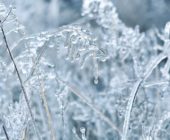
It’s technically winter until Monday, March 20, but for people who live in San Antonio are dealing with that weather rollercoaster that is Texas. One day it’s 40. The next it’s 85. With all this crazy Texas weather, spring allergies are already in full bloom. As much as we all hate the dreaded sniffles, runny noses, coughing and swollen red eyes, spring allergy season is one of the worst time of the year. But we are here to help guide you on what allergies to look out for during spring in San Antonio and how to cope with them.
Mold
Mold is a scary and mischievous species since it’s so small. It can be where you’re least expecting it to be – for example in your basement, bathroom, the cabinet under your sink or even in your back yard in dark corners.
Symptoms Include:
- Runny nose
- Sneezing
- Irritated eyes
- Coughing
- Wheezing
- Itchy throat
Tree Pollen(Cedar Fever)
Oh mountain cedar: how we despise you during allergy season. For anyone that has lived in San Antonio, it’s almost rare to NOT get allergic to these trees due to the excess yellow pollen that is blown throughout the city in clouds. Beware – do NOT park your car under a mountain cedar tree unless you want your car to be turned yellow. Those trees are no friend of ours during allergy season. Cedar allergies may affect people through December until March.
Symptoms Include:
- Runny nose
- Itchy and watery eyes
- Nasal blockage
- Sneezing
- Fatigue
- Mild headache
- Facial discomfort
- Sore throat
- Sensation of ear plugging
Ragweed Pollen
According to the Diagnostics Research Group Expertise in Clinical Research, “San Antonio consistently ranks as one of the worst cities in the US for Ragweed pollen; our humid climate provides ideal conditions for these plants to flourish.” Ragweed plants typically will be in full bloom once the weather becomes cooler by spreading their pollen in the wind.
Symptoms Include:
- Itchy, watery eyes
- Scratchy throat
- Coughing
- Sinus pressure
- Swollen eyes
Grass Pollen
Since grass pollen is microscopic, you may not even see it in the air. Grass pollen is the worst on dry, windy days when the wind carries the pollen in the air.
Symptoms Include:
- Eye irritation including crust on the eyelids
- Skin irritation causing itching and redness
- Sneezing
- Runny nose
Tips on How to Cope with Allergy Season
Clean up after you have spent time outside on high pollen count days.
Pollen can be on your hair and body where you least expect it – causing you to inhale pollen inside and spread the pollen throughout your home.
Monitor how much time you spend outside.
Just as a good rule of thumb: if you are deeply allergic to pollen during allergy season, it may be best to not always be outside if you can avoid it. If you work outside, try just a non-toxic standard dust mask that will limit the pollen from inhalation.
Start taking decongestions and over the counter meds
Be prepared and stock up on allergy medicines to help you cope with the days you just want to sleep and watch Netflix. Once you have been hit with Cedar Fever or allergy season, you won’t want to leave your house.
Have your doctor’s number on speed dial
We’ve all had those days where we must drive ourselves to the doctor when we feel like absolute you know what. Be prepared and save yourself the stress and have your doctors number ready when you need a higher dosage of meds to cope with allergy season.
Maintain your air conditioning system
Did you know your AC system can play a role in your allergies – or hopefully, the elimination of allergy issues? Regularly changing your air filter is very important to keeping pollen out of your home’s air, and investing in high-quality air filters works even better. Additionally, you can invest in an indoor air purifiers – some of which will kill up to 99% of bacteria in the air.





